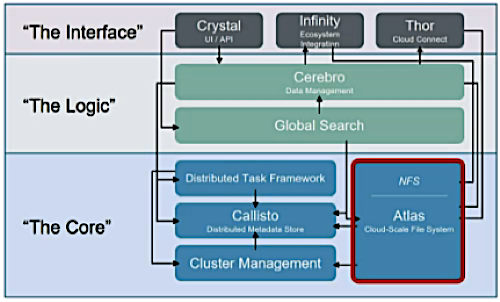The subject matter of this post is a startup of sorts and was triggered by a conversation I had with an industry veteran a few months back. By veteran of course, I mean an old bugger! 😉
It is an entity which begins its journey sourcing a target market in the tech industry and spends day and night pursuing that market to the best of its ability.
It brings in resources to help meet the key requirements of the target market; some of those resources are costly, and others not so much.
Occasionally it hits a bump in the road with funding and potentially needs to find other sources of investment, and may go through several rounds of funding over the course of a number of years. Eventually it gets to a point where the product is of a decent quality and market value.
Then it does a market analysis and discovers that the market has shifted and if the entity does not pivot or indeed re-skill, they will become irrelevant within a few short years.
Eh?
I am of course talking about the career of an IT professional.
Though I may be slightly exaggerating on the becoming irrelevant quite so fast, we certainly all made the choice to follow a career in one of the fastest moving industries on the planet. We have no choice but to continue to develop and maintain our knowledge, in order to keep driving our careers forward.
As a self-confessed virtual server hugger with a penchant for maintaining a pretty reasonable home lab, I enjoy understanding the detailed elements of a technology, how they interact, and acknowledging where the potential pitfalls are. The cloud, however, is largely obfuscated in this respect; to the point where many cloud companies will not even divulge the location of their data centres, never mind the equipment inside them and configuration thereof!

Obfuscation
That said, those of you with a keen eye may have noticed a shift in my twitter stream in the past year or so, with subjects tending towards a more public cloudy outlook… Talking to a huge range of customers in various verticals on a regular basis, it feels to me that a great many organisations are right on the tipping point between their current on-premises / dedicated managed services deployment models, and full public cloud adoption (or at the very least hybrid!).
It’s hard to believe that companies like AWS have actually been living and breathing public cloud for over ten years already; that’s almost as long as my entire career! In that time they have grown from niche players selling a bit of object storage, to the Behemoth-aaS they are today. To a greater or lesser extent (and for better or worse!), they are now the yardstick upon which many cloud and non-cloud services are measured. This is also particularly the case when it comes to cost, much to the chagrin of many across the industry!
To me, this feels like the optimum time for engineers and architects across our industry (most definitely including myself) to fully embrace public and hybrid cloud design patterns. My development has pivoted predominantly towards technologies which are either native to, or which support public cloud solutions. Between family commitments, work, etc, we have precious little time to spend in personal development, so we need to spend it where we think we will get the most ROI!

So what have I been doing?
Instead of messing about with my vSphere lab of an evening, I have spent recent months working towards certified status in AWS, Azure, and soon, GCP. This has really been an eye opener for me around the possibilities of designs which can be achieved on the current public cloud platforms; never mind the huge quantity of features these players are likely to release in the coming 12 months, or the many more after that.
Don’t get me wrong, of course, everything is not perfect in the land of milk and honey! I have learned as much in these past months about workloads and solutions which are NOT appropriate for the public cloud, as I have about solutions which are! Indeed, I have recently produced a series of posts covering some of the more interesting AWS gotchas, and some potential workarounds for them. I will be following up with something similar for Azure in the coming months.
Taking AWS as an example, something which strikes me is that many of the features are not 100% perfect and don’t have every feature and nerd knob under the sun available. Most seem to have been designed to meet the 80/20 rule and are generally good enough to meet the majority of design requirements more than adequately. If you want to meet a corner use case or a very specific requirement, then maybe you need to go beyond native public cloud tooling.
Perhaps the same could be said about the mythical Full Stack Engineer?

Anyhow, that’s enough rambling from me… By no means does this kind of pivot imply that everything we as infrastructure folks have learned to date has been wasted. Indeed I personally have no intention to drop “on premises” skills and stop designing managed dedicated solutions. For the foreseeable future there will likely be a huge number of appropriate use cases, but in many, if not most cases I am being engaged to look at new solutions with a publicly cloudy mindset!
Indeed, as Ed put it this time last year:
RT @alexgalbraith: @MartinLeggatt @julian_wood #HybridArchitects < everyone obviously needs a HUG (Hybrid Usergroup)
— Ed Grigson (@egrigson) March 30, 2016







 TLDR; High Availability on a Budget
TLDR; High Availability on a Budget





 RSS – Posts
RSS – Posts